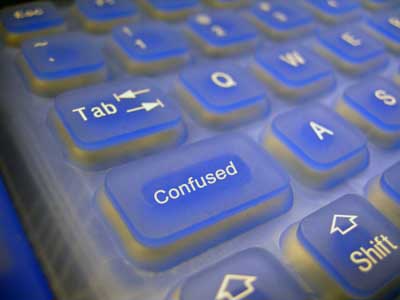Assistive Technology for Dyslexia
"For most, technology makes things easier, for others, technology makes things possible"
Quick Links
Vocabulary
Definitions under the US Individuals with Disabilities Education Act:
Assistive Technology Device:
Any item, piece of equipment, or product system, whether acquired commercially off the shelf, modified, or customized, that is used to increase, maintain, or improve functional capabilities of a child with a disability.
Assistive Technology Service:
Any service that directly assists a child with a disability in the selection, acquisition, or use of an assistive technology device
Today's Tech Triumph
Technology can be extremely empowering for any learner. For the dyslexic student, it can be the difference between confidence and fear, or between failing and thriving.
We are living in a golden age of assistive technology when trends are converging to transform education for the better:
Technology is maturing - Applications like speech to text, that used to be clunky and ineffective, are fast becoming slick and powerful. Hardware that used to be more like electronic free weights now fits comfortably in your pocket. If you are not surprised what today’s tech can do, you are not keeping up.
Everyone wins - Carrying a tablet and using the Dropbox cloud storage service to save your files is as beneficial for efficient readers as it is for the dyslexic.
No more stigma - Used to be that the "spec ed" kids didn't want to be seen using their heavy old laptop when everyone else was working on paper, but now that everyone is plugged in, the dynamic is changing. Tech is cool.
BUT, with so many e-tools out there, things can quickly get confusing, even overwhelming. To help simplify things, below you will find a Parent Primer for dyslexia technology software.

Too Many Assistive Tech Choices Can Lead to Confusion
Wait! I Can't Afford it!
The latest iPad Air with a nice case can run you over $700. That's pretty steep for most people and out of reach for some. Here are 5 tips for lowering your costs:
1) Ask the school to buy it: If needed, be sure to have assistive tech mentioned in your child's individual education plan (IEP) and see if your school has the budget for it.
2) Purchase through the school: Schools often get discounts because of their bulk purchasing. They might pass along that discount to parents.
3) Buy a version of hardware that is one generation old: For half the cost or less, you'll get 90% of the functionality.
4) Buy used: Try Kijiji or Craig's List to start. You can often get the latest tech at the price of an older model. Buy a used, older model for even steeper savings.
5) Share it: Sometimes each child needs their own, but share where you can.
Still can't afford it? Check with local charities that might donate or loan what you need. Think this is a pipe dream? Check out this link and think again!

Parent Primer for Assistive Technology
1) What is assistive technology?
2) Things to consider before your purchase.
3) How to get the most out of your tech choices.
1) What is Assistive Technology
Under the US Individuals with Disabilities Education Act, assistive technology is defined as "any item, piece of equipment, or product system, whether acquired commercially off the shelf, modified, or customized, that is used to increase, maintain, or improve functional capabilities of a child with a disability"
Very simply, assistive tech is any device or product that can help your child or student achieve things that they wouldn't otherwise be able to.
Here are some examples of assistive tech and how they might help your child:
- Calendars & Agendas: Keep track, with ease, of daily schedules, timelines, test dates, deadlines, extra curricular activities and more
- E-readers: Improve reading speed and comprehension
- Writing and Notetaking Tools: Write quickly and grammatically
- Brainstorming and Mapping Tools: Develop, outlines, plans and idea maps visually as well as in text
- Text to Speech: Turn eye reading into ear reading
- Speech to Text: You no longer have to write everything, you can "talk it" and then edit as necessary
- Storage and Organization: Keep files organized and accessible
- Coloured overlays or tinted lenses: Intended to reduce visual stress and improve reading speed and comprehension
2) Things to Consider Before you Buy

Here are 5 things to keep in mind when evaluating an app or piece of hardware:
1) Your child's needs: Is it reading? Comprehension? Math? Review any educational assessments that have been completed and talk to the school. Also review your child's individual education plan.
2) Age appropriateness: This is an extension of point #1. Your child may need help with writing but a program like iWordQ would be too advanced for a 5 year old. Younger children in particular need simpler software.
3) App/Hardware Reviews: What are others saying about the application? Read the reviews at the iTunes Store or at Amazon.
4) Integration with other apps and hardware: Can you print to your computer with the software? Does it work on older versions of your hardware or operating system? Is it compatible with Dropbox?
5) Cost: Could you get something comparable for free? The truth is that most apps are inexpensive, so don't hesitate to drop $5, even just to experiment. Hardware remains pricey, but the bang for your buck is still improving dramatically.
3) How to Get the Most Out of Your Purchase
Three things you can do to get more out of your time and money:
1) Give it time to succeed. Change is hard. No matter how good the technology is, be prepared for some resistance at the start. For example, your child may ask: "Why can't I just use my paper calendar"? Well he could, but e-calendars can remind you of dates that are otherwise forgotten and can help in day-to-day planning. Making the shift will require some perseverance.
2) Learn from others. I have lost count of the number of times I have learned something useful from simply watching someone else use Microsoft Word or Excel. Conversely, I am regularly shocked to see people using laborious work arounds in those same applications when there are elegant fixes at the ready.
Shortcut keys, formatting fixes, or just features you don't use - there is always more under the software hood to learn!
3) Move on. This sounds like a contradiction of #1 above, but it isn't. There just comes a time to cut your losses if you're not happy with your purchase. Don't throw more time at something that has clearly failed. Move on to another app or go back to what worked before.
Our Story
It's fair to say that we are still in the early stages of riding the assistive tech wave, but we've recently taken the plunge on an iPad Air (Santa was generous). We are excited about how it can help over the course of middle school. Deciding on apps is still a bit daunting.
The iPad's speech to text capacity alone adds a lot of value for us since writing is such a difficult task. Speaking a short assignment instead of writing it makes it fun rather than a chore.
Also, we're experimenting with iWordQ and have been impressed by its predictive writing help. By suggesting the next word and correct spelling the first book report worked up very quickly!
Our school provides a laptop in the classroom in support of the IEP but it doesn't seem to get a lot of use. Similarly, I purchased some audio books that I thought would be welcomed with enthusiasm, but my stepson's response has been luke warm thus far.
So although there have been some hits and misses, we remain optimistic that this new wave of tech will make a real difference not only for school, but for life.
Return to the top of Assistive Technology
- Home ›
- Assistive Technology
Good Luck and Good Reading!
Photo Credits: iPad: By Tom Morris (Own work) [CC-BY-3.0 (http://creativecommons.org/licenses/by/3.0) or GFDL (http://www.gnu.org/copyleft/fdl.html)], via Wikimedia Commons. Android: By Twinmostech (Own work) [CC-BY-SA-3.0 (http://creativecommons.org/licenses/by-sa/3.0)], via Wikimedia Commons; Confused Button: Image from morguefile.com user:Ladyheart
New! Comments
Share your thoughts or ideas! Leave us a comment in the box below. You can post it at this site only or on Facebook too, it's up to you.